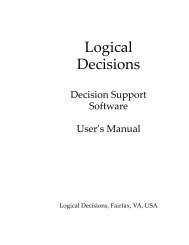AFTER VIOLENCE: 3R, RECONSTRUCTION, RECONCILIATION ...
AFTER VIOLENCE: 3R, RECONSTRUCTION, RECONCILIATION ...
AFTER VIOLENCE: 3R, RECONSTRUCTION, RECONCILIATION ...
Create successful ePaper yourself
Turn your PDF publications into a flip-book with our unique Google optimized e-Paper software.
amnesty? By being lenient, soft with prison and fines, but hard<br />
on the need to relate to the victim. Half-amnesty, in short.<br />
[3] State-Victim: In both models the state gives the victim<br />
a voice and offers a sympathetic ear. But under the T&R model<br />
there is more focus on restitution to the victim, seeing the<br />
trauma as a social responsibility, and less on retribution.<br />
Nothing of this seems impossible. Starting with the justice<br />
model, more and more elements of the reconciliation model could be<br />
introduced, gradually. Basically what would be needed would be<br />
personnel able to handle reconciliation, and judges able to<br />
accommodate both kinds of knowledge and skills. And the public<br />
will have to learn to reconcile and not ostracize if there is<br />
progress in the perpetrator-victim relation.<br />
Imagine we now superimpose Models I and II on each other, as<br />
matrix and as graph. The presentation becomes somewhat messy, but<br />
more important is how a sentence might read:<br />
You P have committed crimes against the laws of ----, and you<br />
have violated the general moral bonds tying humans together by<br />
your heinous acts of violence against V. For breaking the law I<br />
hereby, in the name of justice, sentence you to----.<br />
In addition to serving this sentence you are obliged, after<br />
mature reflection, to extend your deep apology to V and/or V's<br />
family and try your best, directly and/or indirectly, to repair<br />
the human relations you violated. In addition to this you are<br />
obliged to repair the damage done through direct restitution to V<br />
and/or V's family, in kind and/or money, over time.<br />
Your case is closed when you have served your sentence and<br />
justice has been done, and you have extended your apologies, done<br />
your restitution, and reconciliation has been done.<br />
The exact amount could then be negotiated in the Court-V-P<br />
triad. P has a say, but no veto. And the relative weight of the<br />
two models would be the crucial variable that could catch the<br />
"circumstances" surrounding the case, such as cultural and<br />
48
















